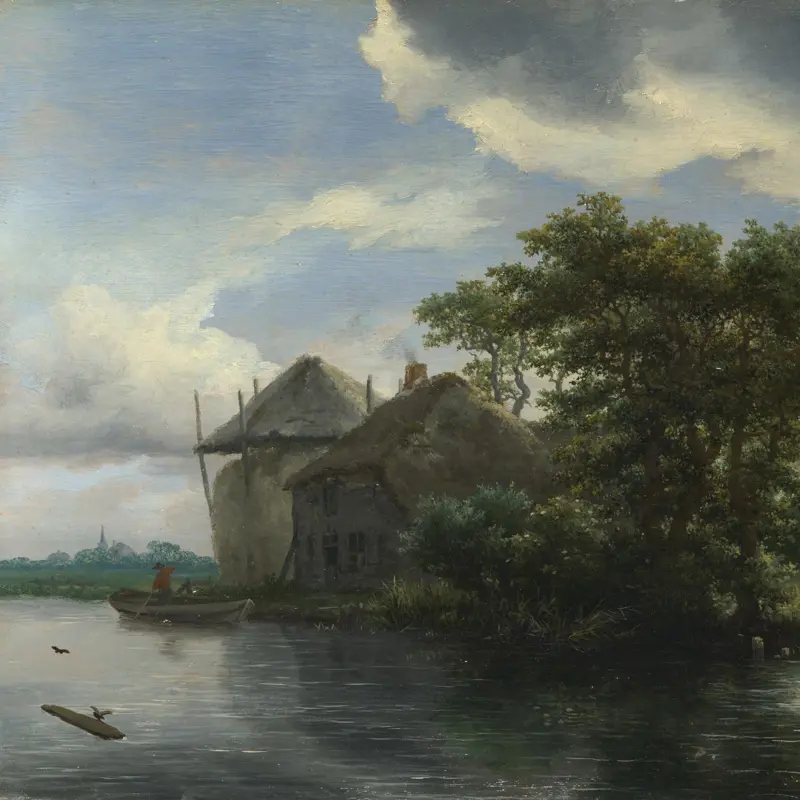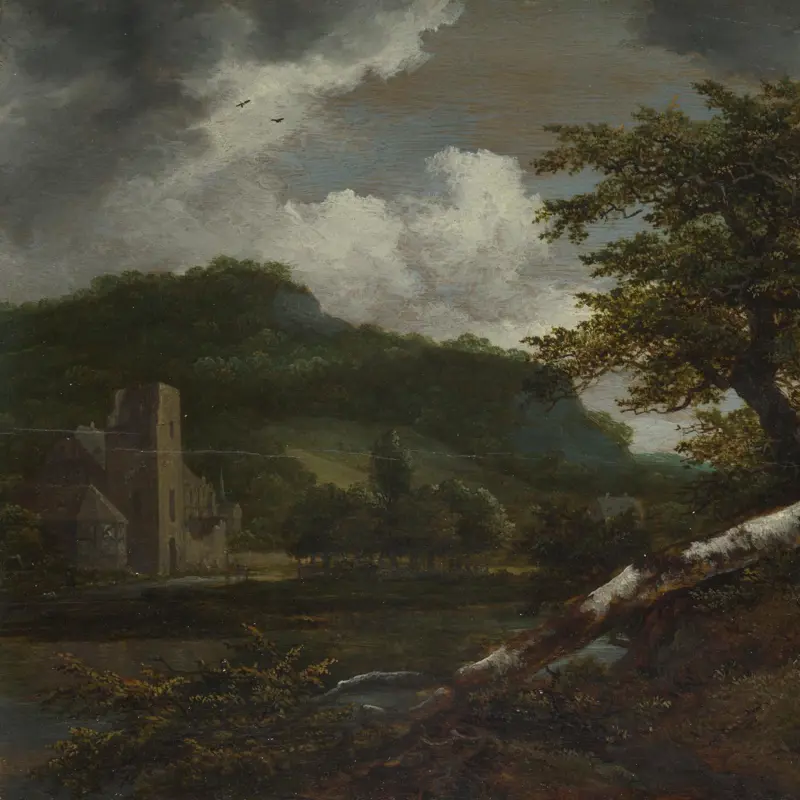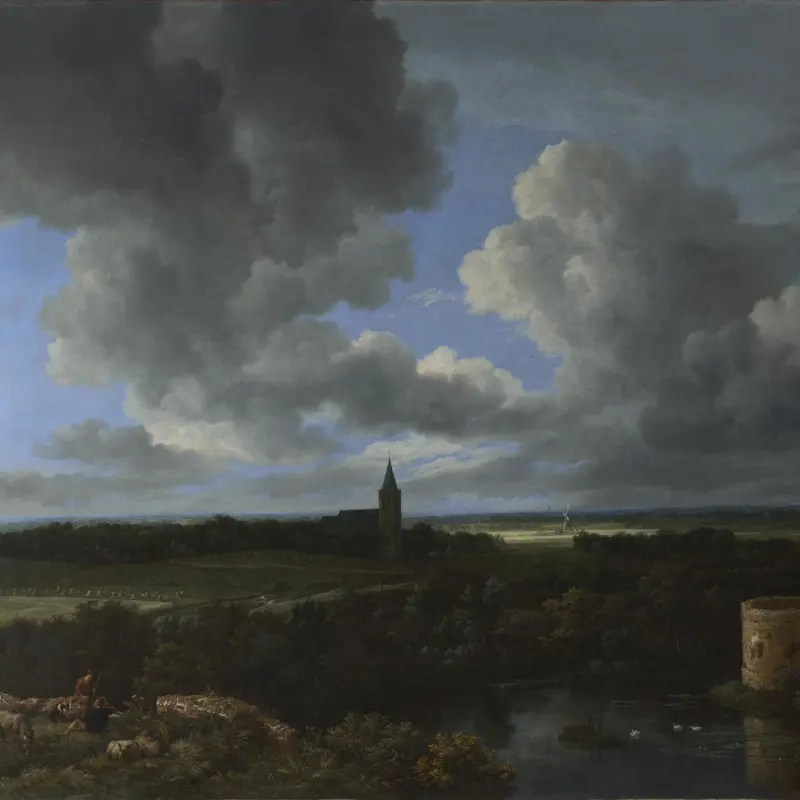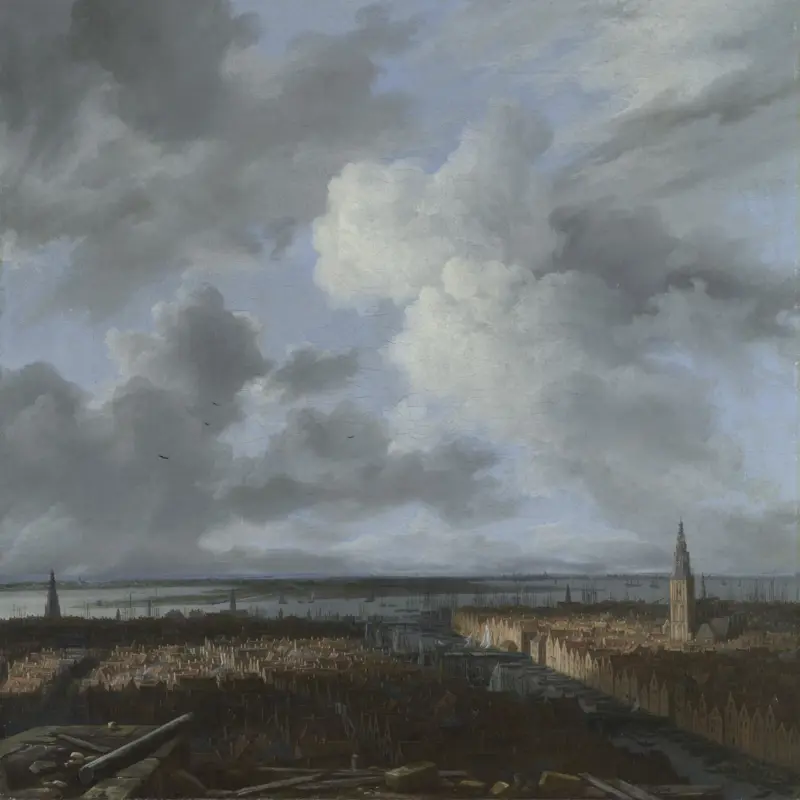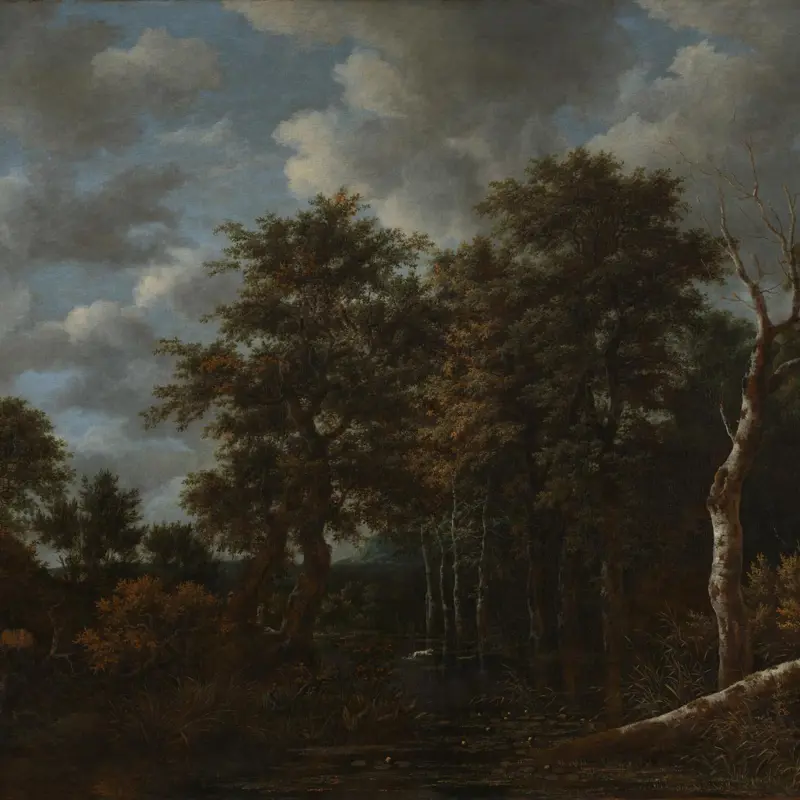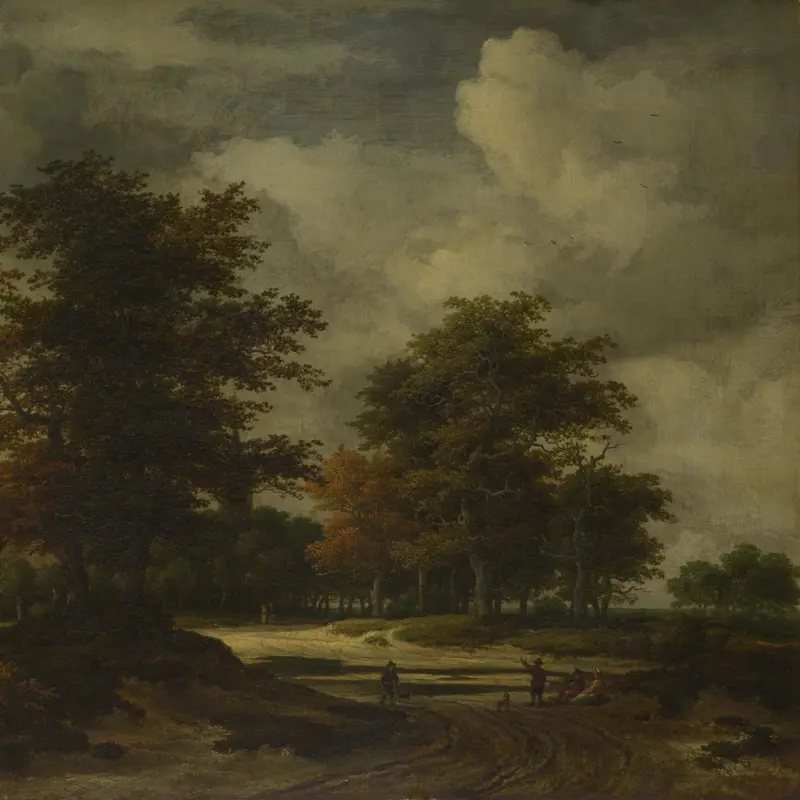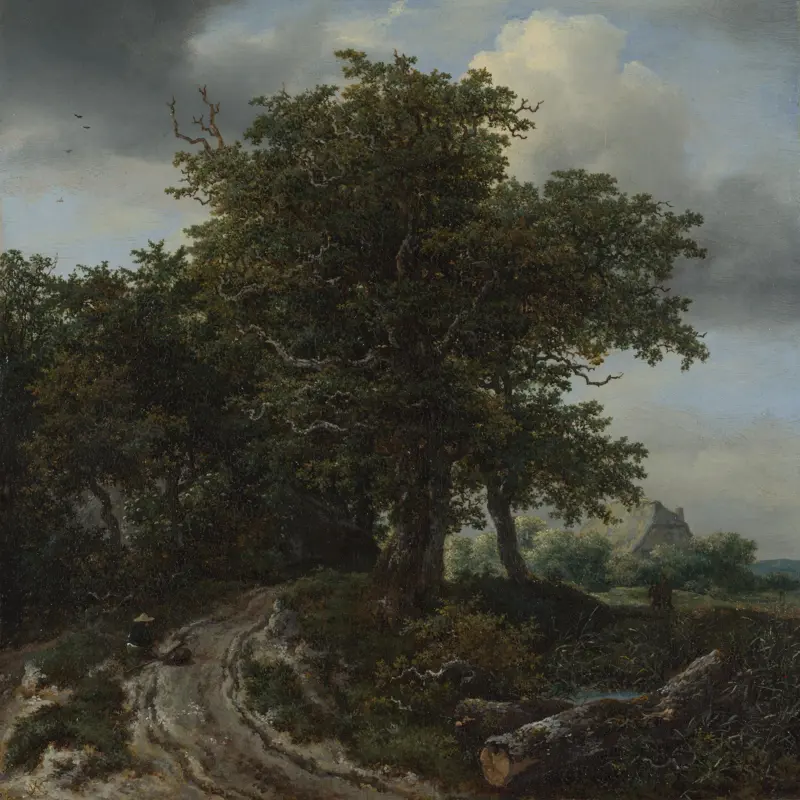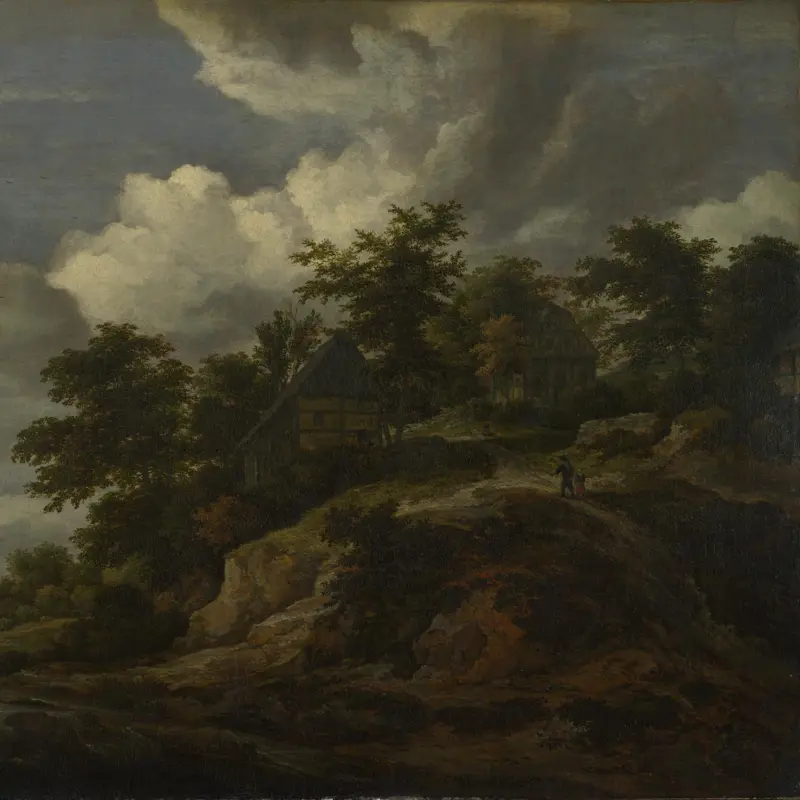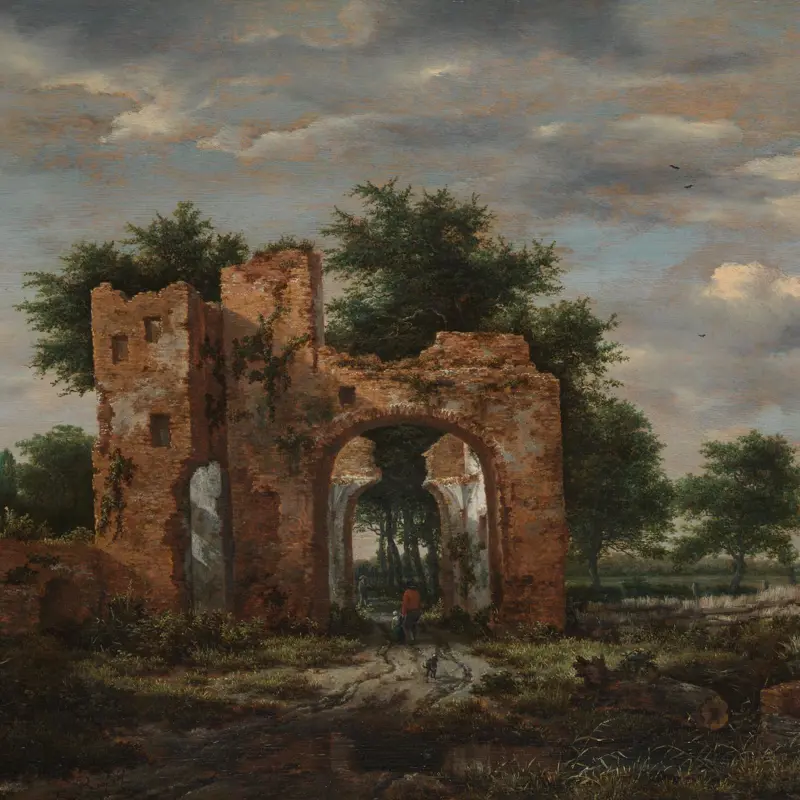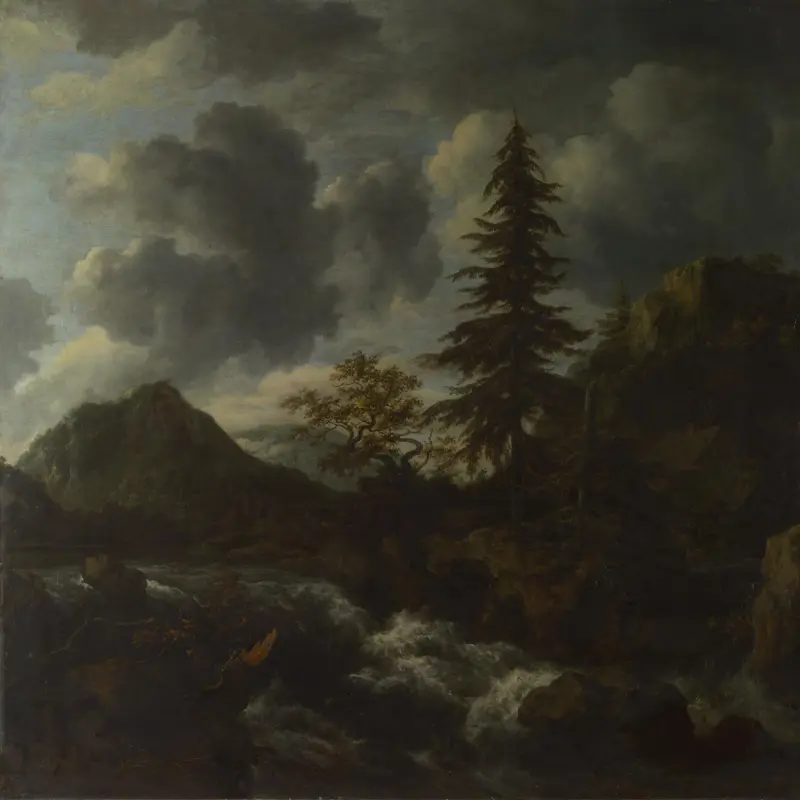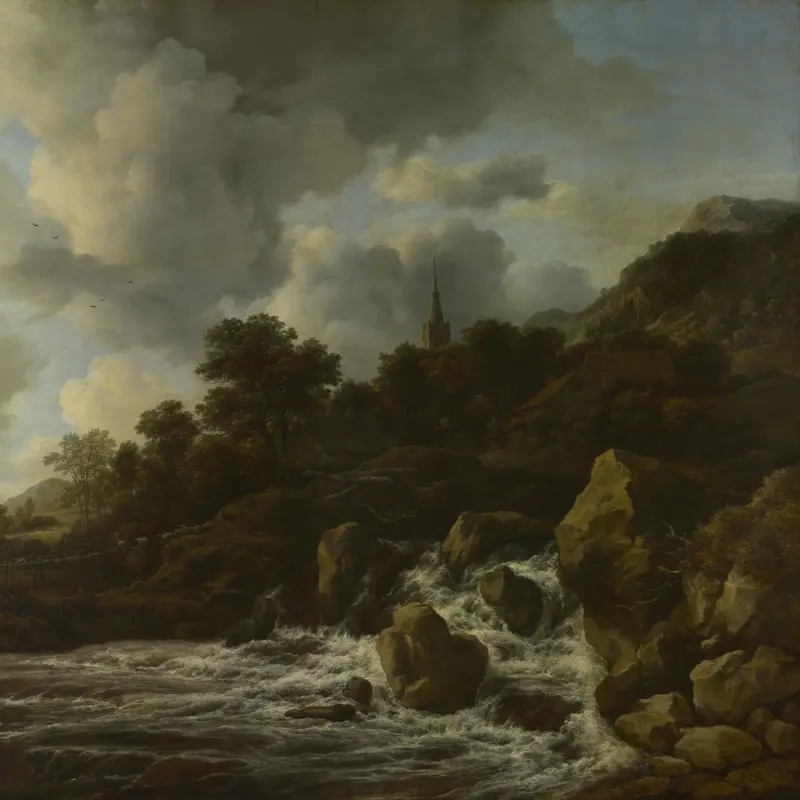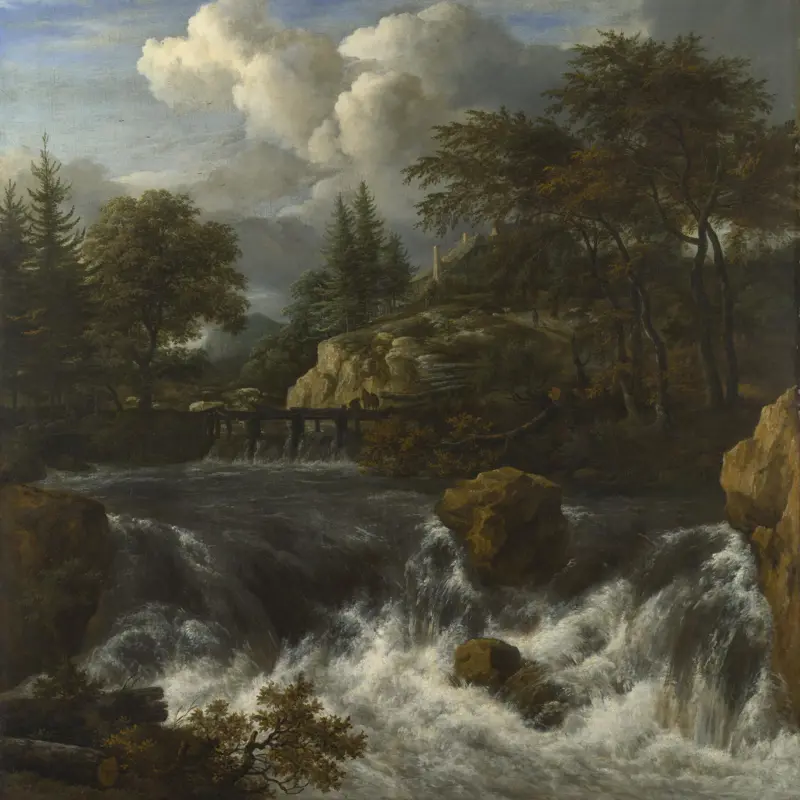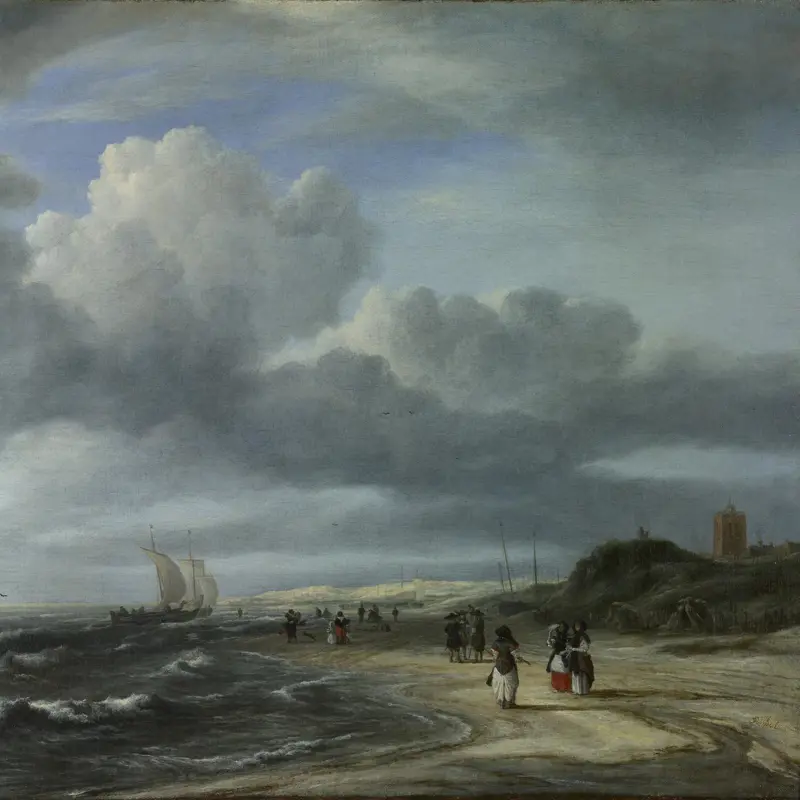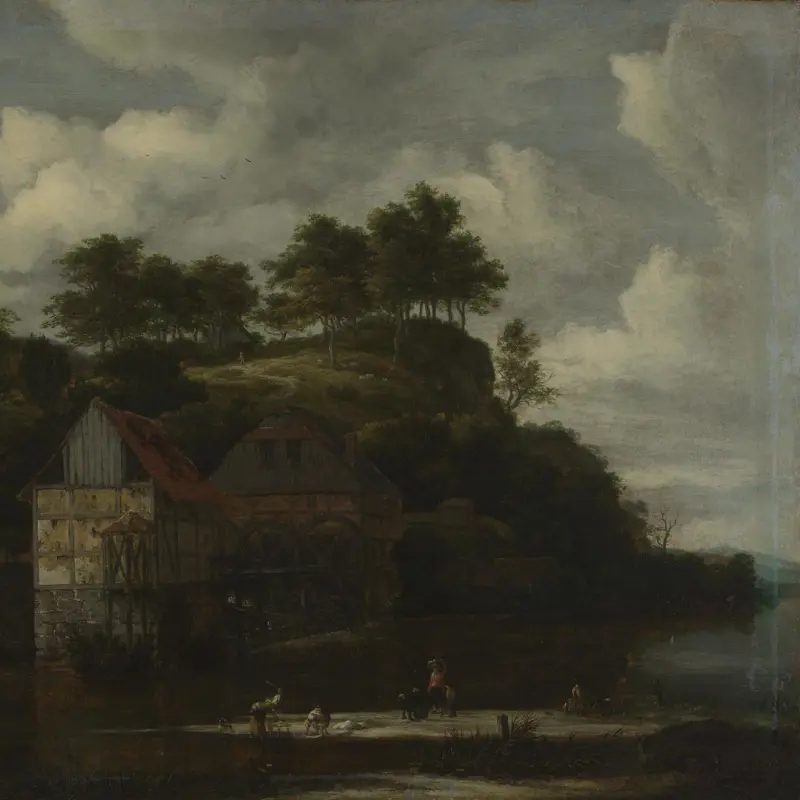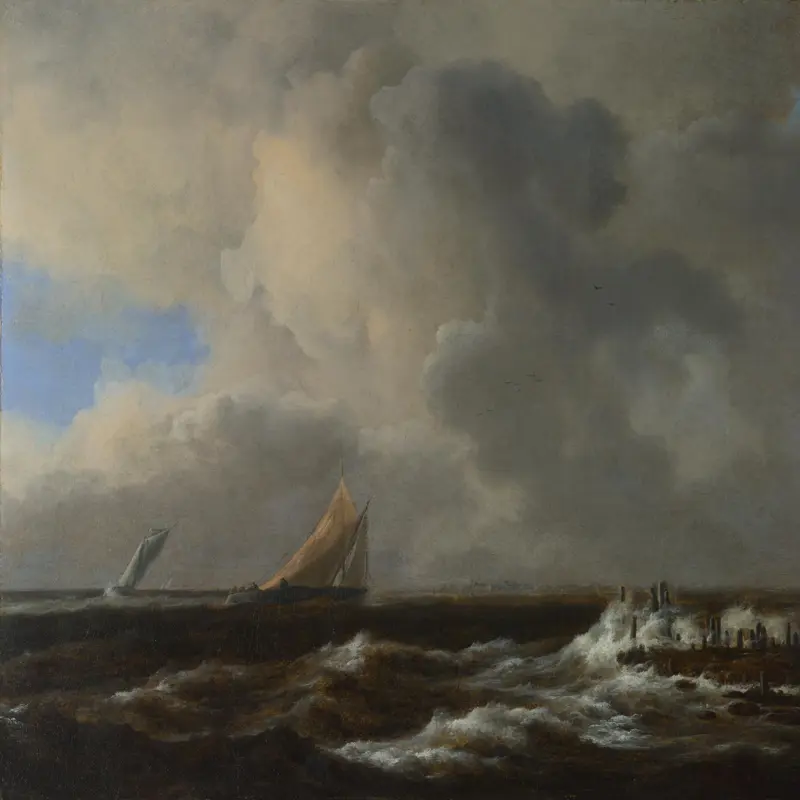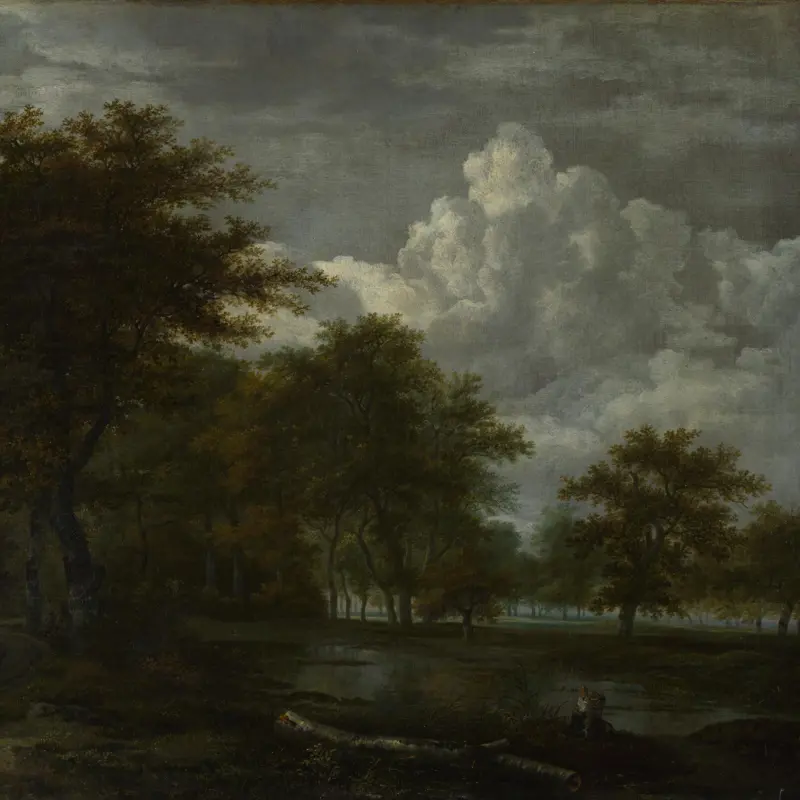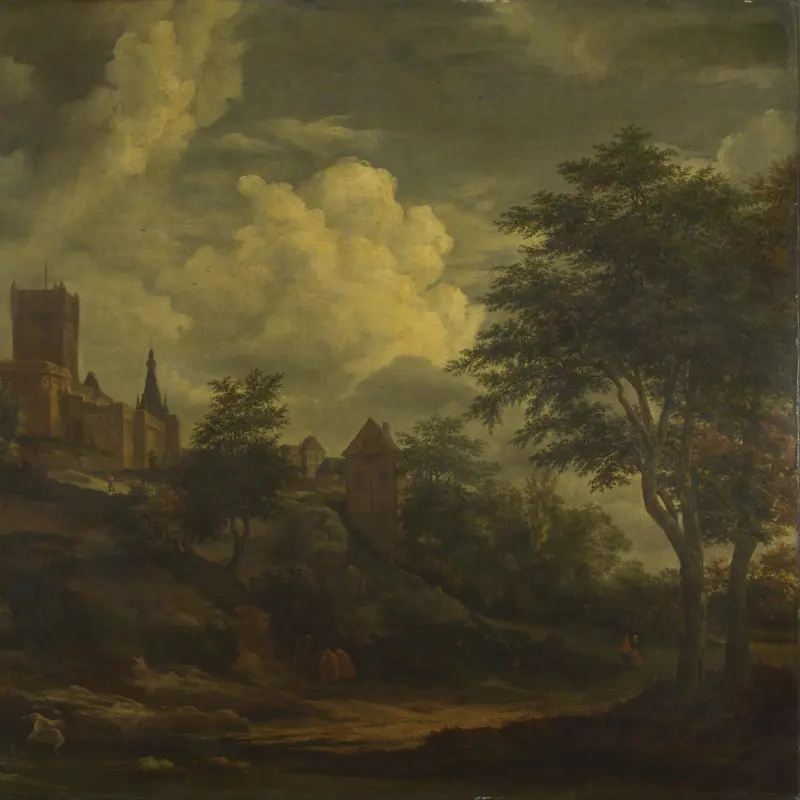Jacob van Ruisdael, 'A Bleaching Ground in a Hollow by a Cottage', probably 1645-50
About the work
Overview
In the seventeenth century, the linen bleaching fields of Haarlem were considered to be the best in Europe. Linen was an important fabric and to fetch the highest prices its natural beige colour needed to be bleached white. The flat fields and ready water supply in the rivers and canals around Haarlem were ideal for this protracted process.
This is one of several landscapes by van Ruisdael which feature bleaching, though it gives a more enclosed view of a smaller set-up than is shown in most of his paintings. One man stands in a ditch dunking the material with a stick. Another lays it out in strips on the bank next to him, while a woman appears to be overseeing the work. That sense of enclosure – a scene tucked away in the dunes and viewed from behind a tree – gives us the feeling that we are peering into a private world.
Key facts
Details
- Full title
- A Bleaching Ground in a Hollow by a Cottage
- Artist
- Jacob van Ruisdael
- Artist dates
- 1628/9? - 1682
- Date made
- probably 1645-50
- Medium and support
- oil on wood
- Dimensions
- 52.5 × 67.8 cm
- Inscription summary
- Signed
- Acquisition credit
- Bequeathed by Sir John May, 1854
- Inventory number
- NG44
- Location
- Not on display
- Collection
- Main Collection
- Previous owners
Provenance
Additional information
Text extracted from the ‘Provenance’ section of the catalogue entry in Neil MacLaren, revised and expanded by Christopher Brown, ‘National Gallery Catalogues: The Dutch School: 1600–1900’, London 1991; for further information, see the full catalogue entry.
Bibliography
-
1960Maclaren, Neil, National Gallery Catalogues: The Dutch School, 2 vols, London 1960
-
1991Maclaren, Neil, revised by Christopher Brown, National Gallery Catalogues: The Dutch School, 1600-1900, 2nd edn (revised and expanded), 2 vols, London 1991
-
2001
C. Baker and T. Henry, The National Gallery: Complete Illustrated Catalogue, London 2001
About this record
If you know more about this work or have spotted an error, please contact us. Please note that exhibition histories are listed from 2009 onwards. Bibliographies may not be complete; more comprehensive information is available in the National Gallery Library.

